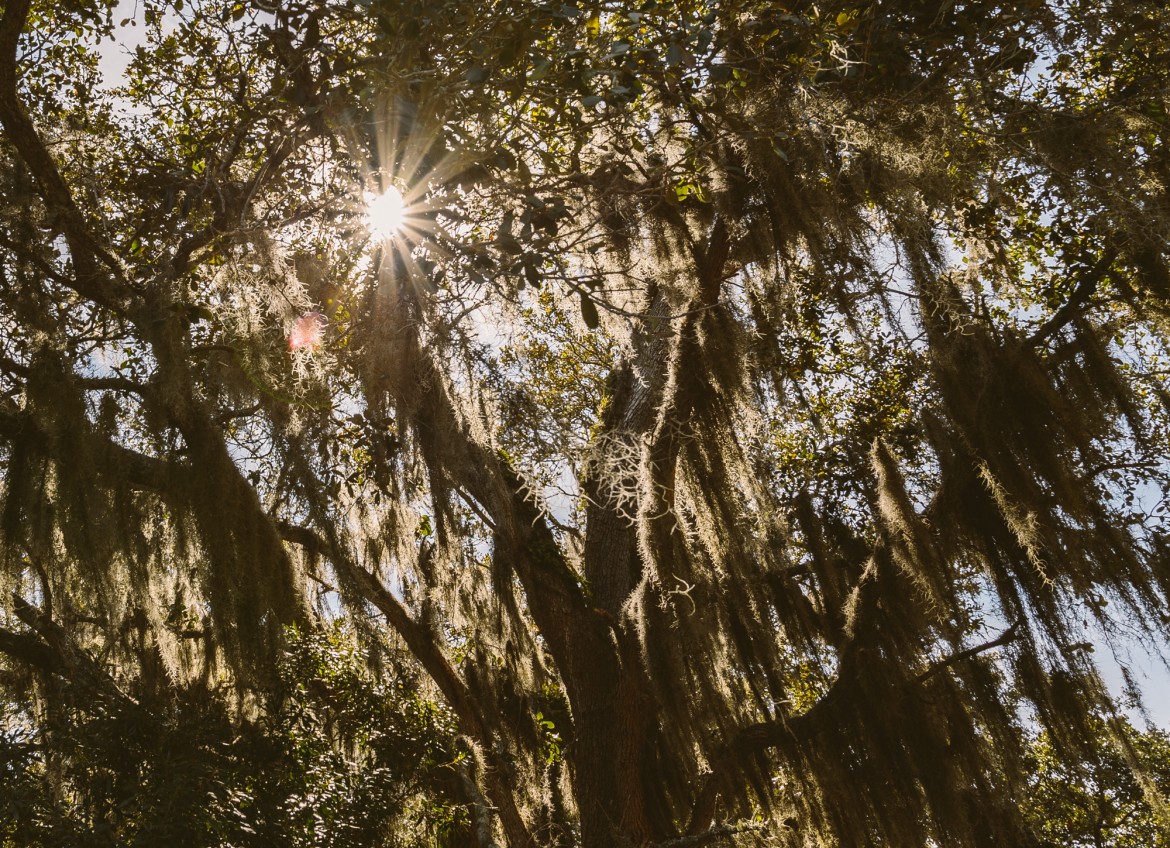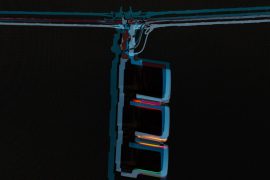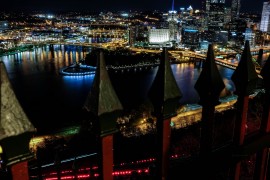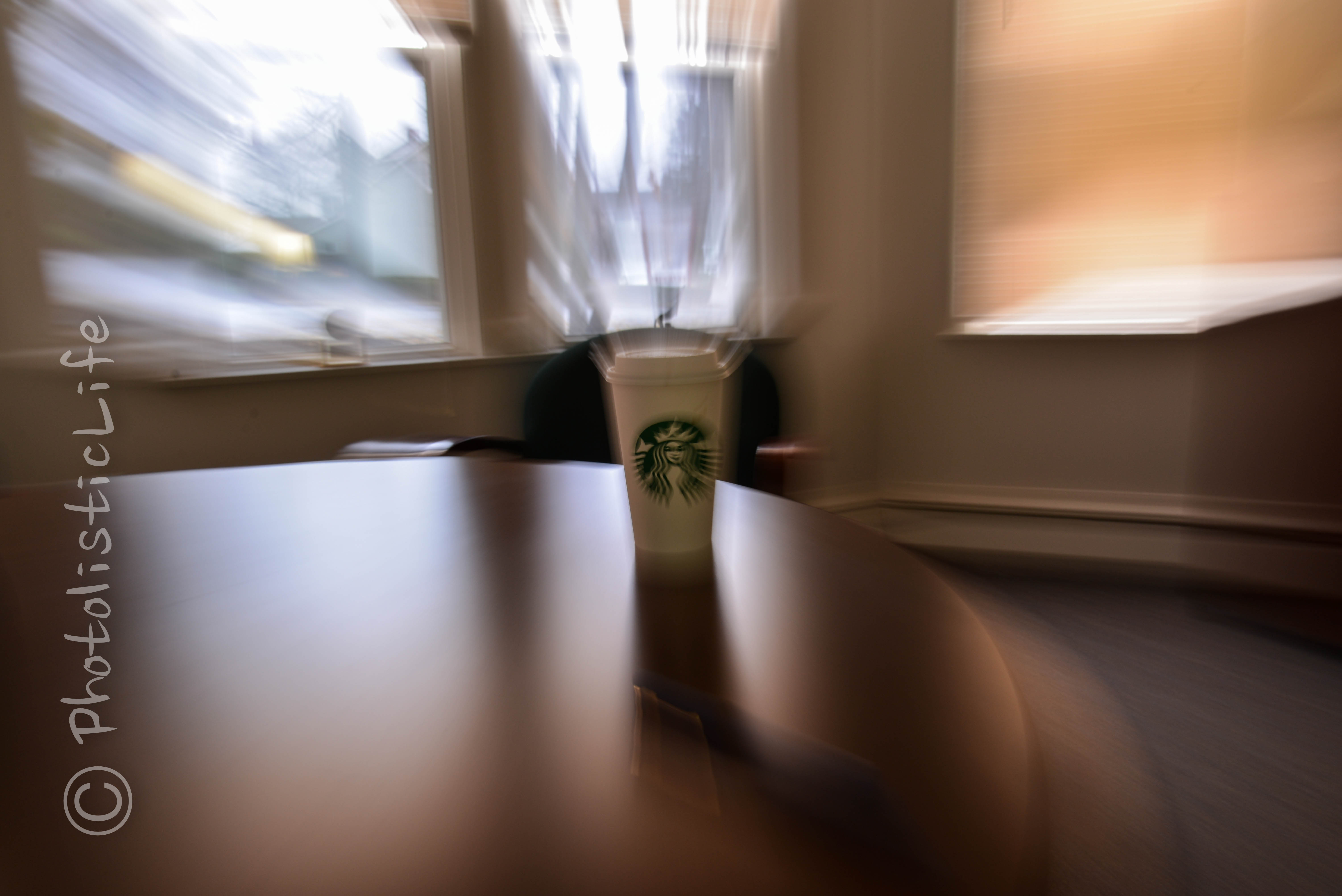The sun is the largest object in our solar system, it contains 99.8% of the solar systems total mass. The Romans, Greeks, and many other civilizations personified it. Hundred of thousands of humans “worship” it by lathering up in fancy oils (probably not so different from cooking oils) and laying under it for hours at a time. I’m not talking about sunsets or sunrises here, I’m talking about the sun in all of it’s glory. Why don’t you have hundreds of photographs of the sun in the sky? I imagine it’s because you cherish your little peepers and don’t want to go blind. There are ways to photograph the sun that won’t burn your retina or harm your camera.
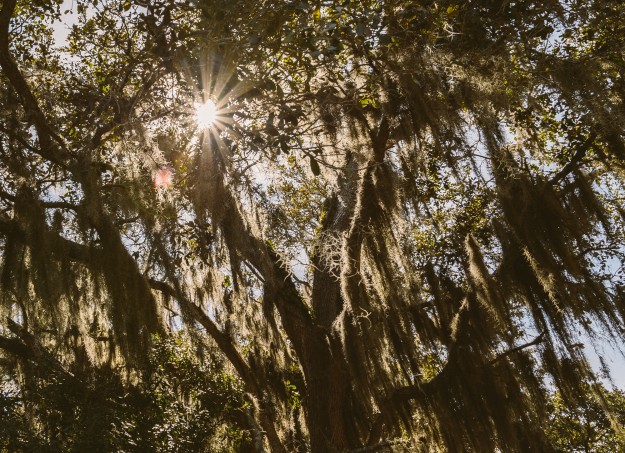 ISO 100, 24mm, f/11, 1/80 sec.
ISO 100, 24mm, f/11, 1/80 sec.
When considering photographing in the general direction of the sun anyone who likes their camera gear will immediately ask themselves if the suns rays are harmful to the cameras sensor. The quick answer is yes and no. If you are taking a quick shot towards the sun like what you see above then you will be fine, if you are taking a long exposure shot with the suns rays directly landing on your cameras sensor for a prolonged period of time you may damage your cameras sensor.
There’s not really a good article out there on the effects of prolonged sun exposure to modern cameras. There are plenty of folks who believe they know but to be honest, there are so many variables that to make a blanket statement like “don’t photograph toward the sun or it will ruin your sensor” is ridiculous. However, since I don’t know what camera you are using, or the age of it, I will tell you to photograph the sun at your own risk, use common sense.
Without getting into too much detail I will tell you that if you are shooting with a modern DSLR and taking a shot like the ones in this article then you don’t have to worry about your cameras sensor. The mirror in your camera will keep the harmful rays from damaging your sensor while you are focusing (though the same can’t be said for your eye). Once you press the shutter button the mirror will flip out-of-the-way for a brief moment where the sun will hit your sensor but in my experience it’s not nearly long enough to damage anything. So with so many variables at play how can you capture a dynamic image of the sun without damaging your camera or eye-ball?
Use Your Brain – Use Live View Mode
If I asked you what the one thing you could not leave the house without before enjoying a day of photography what would you tell me? Camera battery? A lens or two? How about your freaking eyes? Ya, the one most important God-given tool you’ll need when photographing anything is your eyes. So when photographing something bright like the sun you’ve got to take every precaution to protect your little peepers from becoming hollow, sightless, reminders of what not to do in photography.
When deciding whether to leave your camera in live view or using the viewfinder to take photographs of the sun remember that live view locks your mirror up while your viewing the LCD screen, this means direct sunlight onto your cameras sensor instead of your eyes. Using the viewfinder, however, directs the sunlight right onto your retina. Using your brain means you’ll use live view (regardless of the harm to your sensor) as opposed to blinding yourself with the viewfinder. You can replace a camera easily enough (although costly) but you only get two eyes. Normal shots like what you see in this article won’t harm your cameras sensor when using live view mode.
Composition
As with every other type of photography, composition is everything. If you put something in front of the sun, something that splits the bright rays coming from the sun, you’ll create star-bursts like you see in this photograph and the one above. Having the star-burst look around the sun is more visually appealing that just a bright blob in the sky.
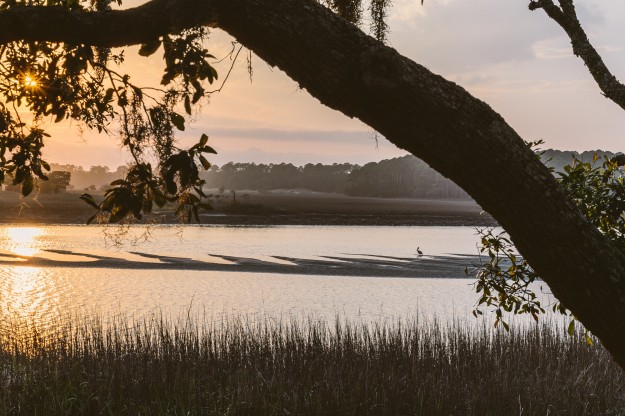 ISO 100, f/13, 56mm, 1/60 sec.
ISO 100, f/13, 56mm, 1/60 sec.
Leading lines work well when photographing the sun, the bright orb will grab viewers attention from anywhere in the frame but without a leading line it will feel un-anchored. If you are photographing near a river, lake, or ocean you’ll have a natural leading line created by the suns reflection in the water.
I’d recommend starting with the Rule of Thirds at first and then recomposing on the fly. The great thing about the sun is it’s so freaking bright that it will grab attention where ever you place it.
Timing
This is the best part about photographing the sun, any time will work… so long as it’s during the day… when the suns out. The photograph at the top of this article was taken in the middle of the day when the light was too harsh to photograph much else.
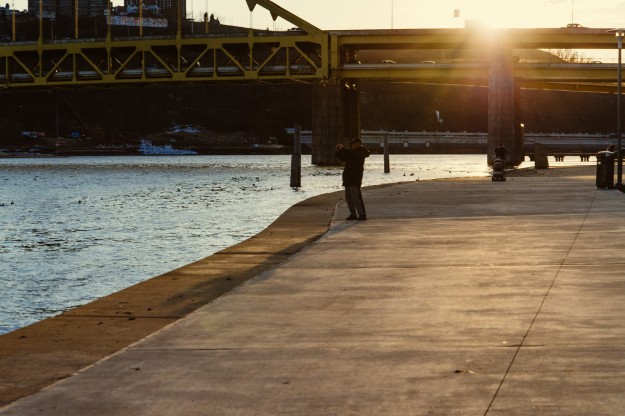 In the earlier and later parts of the day the sun will be at a lower angle, easier to position behind something in order to obtain the star-burst effect. Those parts of the day also have softer, more golden, light.
In the earlier and later parts of the day the sun will be at a lower angle, easier to position behind something in order to obtain the star-burst effect. Those parts of the day also have softer, more golden, light.
Timing obviously dictates the position of the sun in the sky relative to where you are standing, this position will determine how I include the sun in my photographs. The higher the sun is the more likely I am to use lens-flare when using the sun to enhance an image. When the sun is lower in the sky I’ll use that angle to create star-bursts. Sometimes you can get away with both star-burst and lens flare in an image.
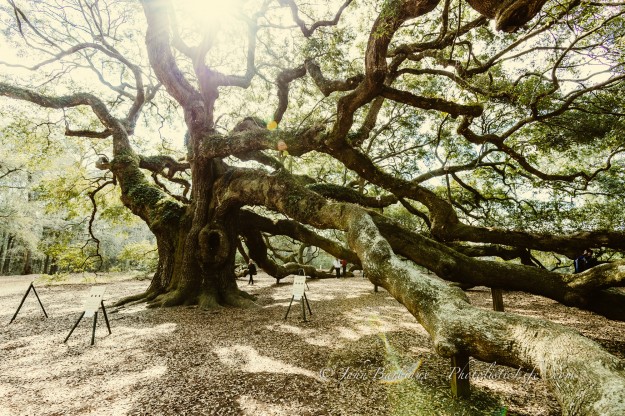 Image attempting to take advantage of lens flare and star-burst with the sun.
Image attempting to take advantage of lens flare and star-burst with the sun.
Camera Settings
Shooting in Aperture priority or Manual will work fine. If you shoot in manual mode you’ll want to under-expose slightly to achieve the star-burst effect with the sun (normal or over exposure will result in a bright blob instead). If you accidentally over-expose you can try reducing your highlights in post processing and you may be able to recover the star-burst effect if you captured it. Shooting in RAW is a must, you’ll need to pull the details out of the shadows, if you under-expose, in post processing.
If you choose aperture priority mode you can still under-expose by using the exposure compensation dial (or setting if you don’t have a dial for it).
Conclusion
Using the sun to create star-bursts and lens-flare can certainly enhance an image, it can create dynamic and unique photography. However, one must be careful with the lens-flare, it should look deliberate and not detract from the overall image. When exploiting a lenses imperfection, like lens-flare, you walk a fine line between something someone will think looks impressive versus something someone will interpret as you not knowing what the heck you’re doing.
Once you’ve captured some great shots of the sun you can head over to the Submit An Article page or our Facebook page and share your images with the rest of us. Good luck!

